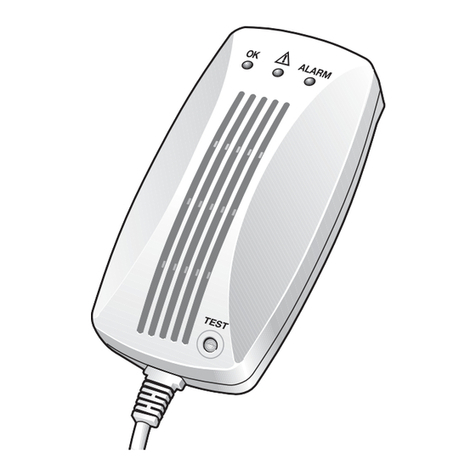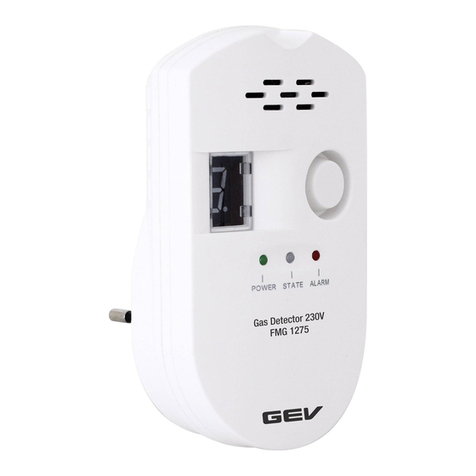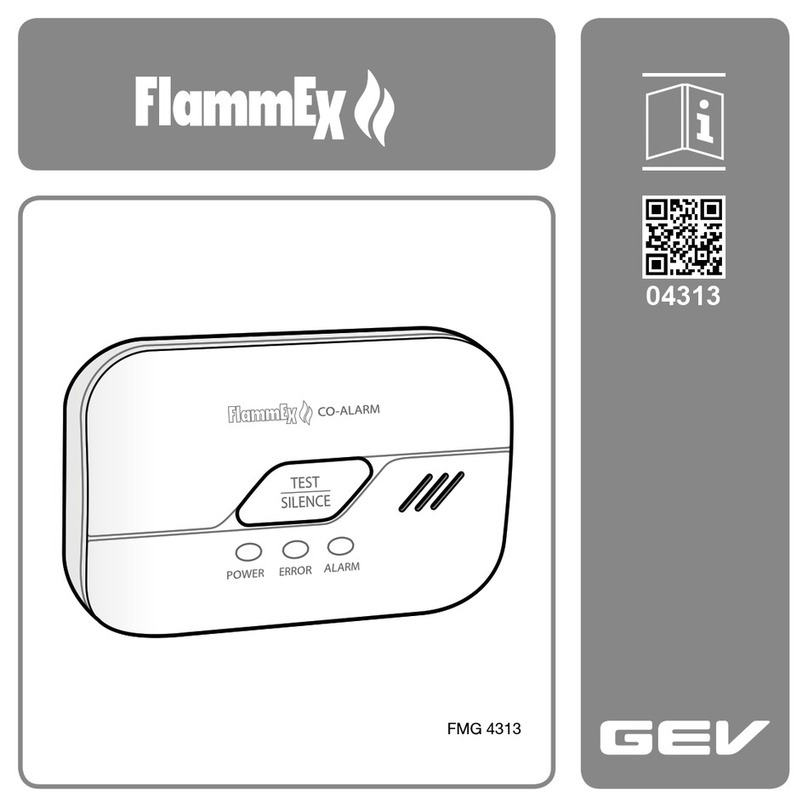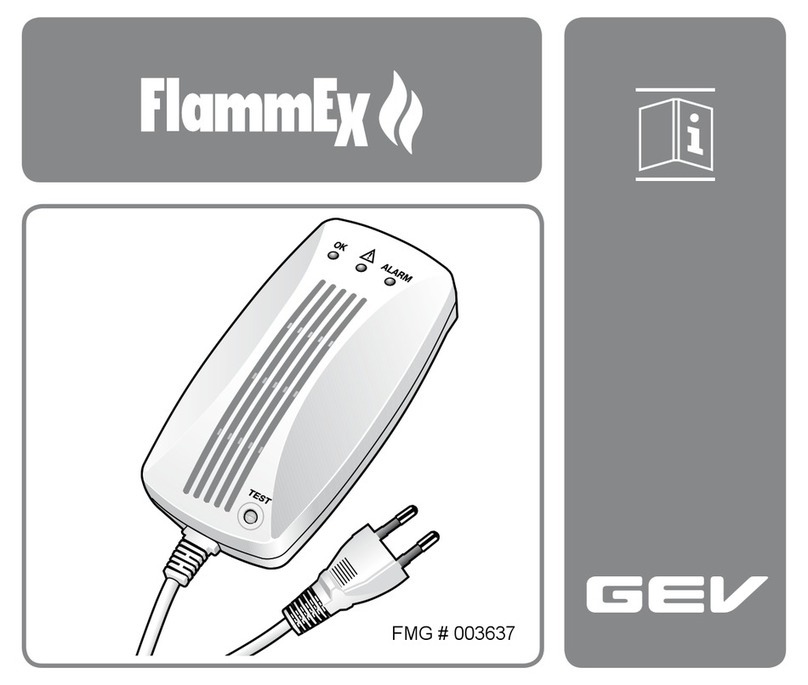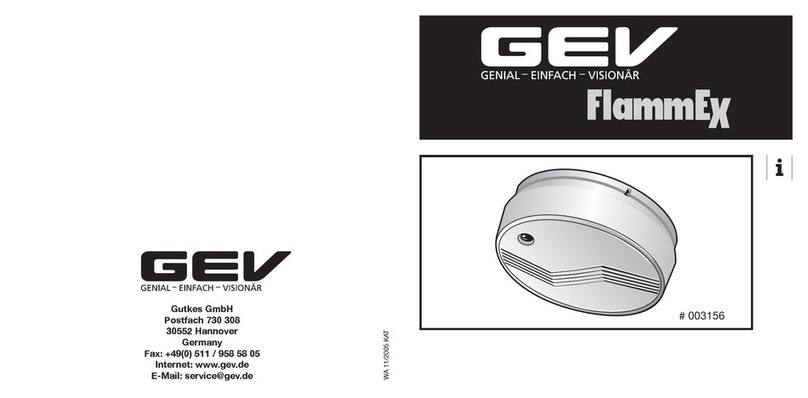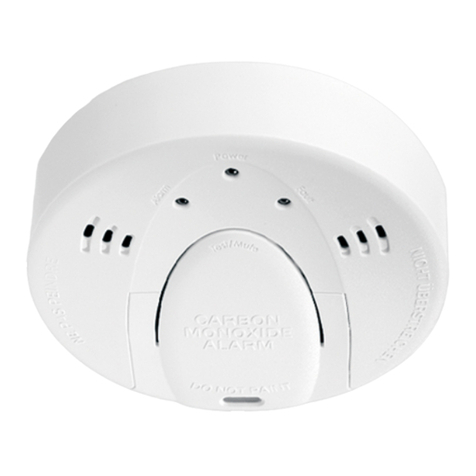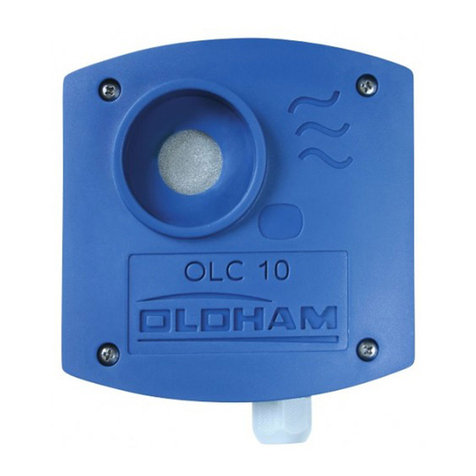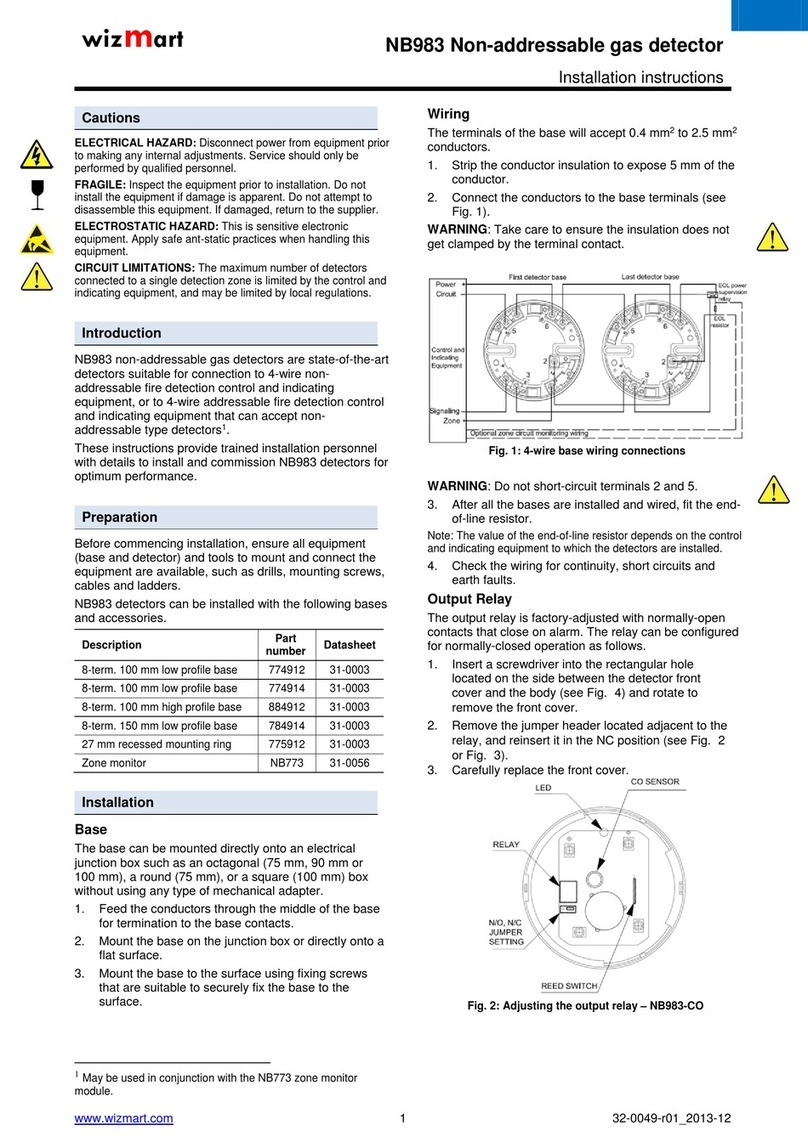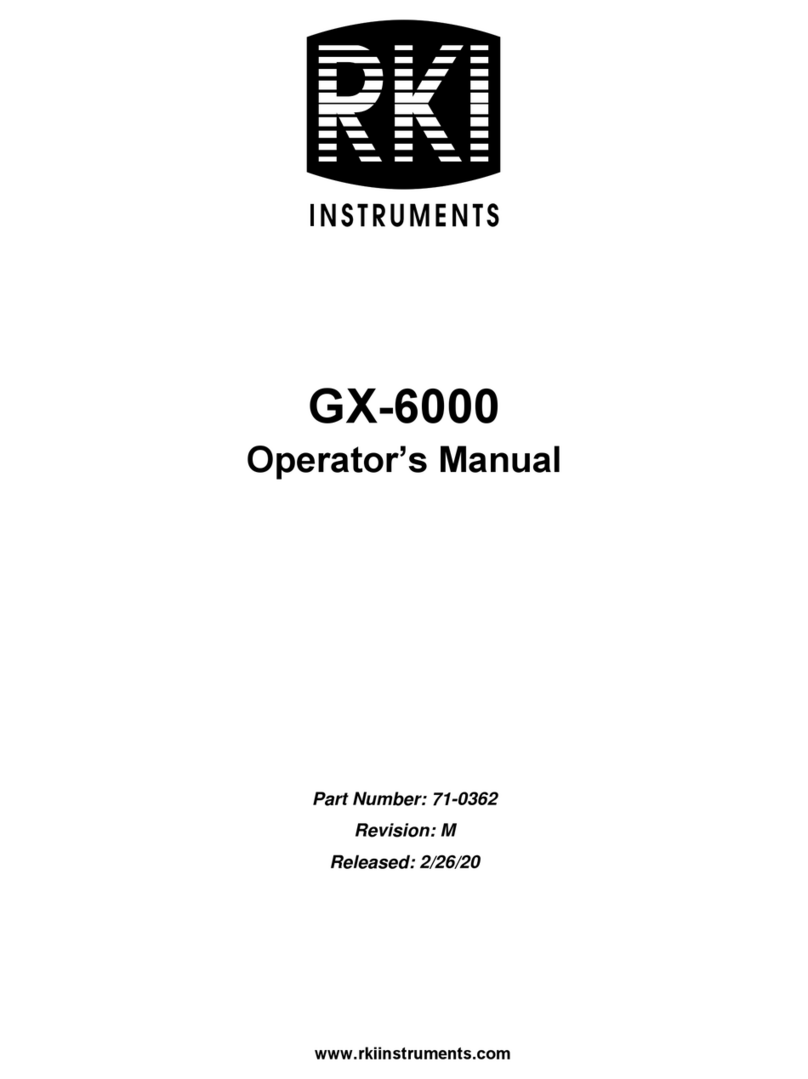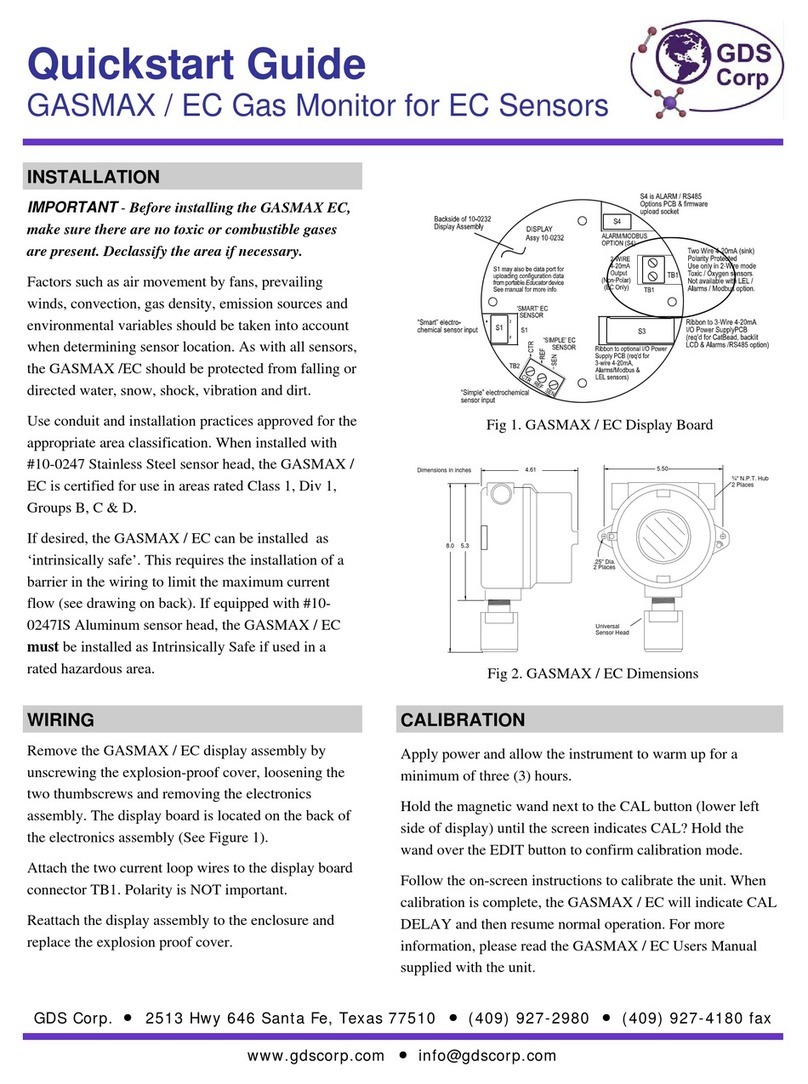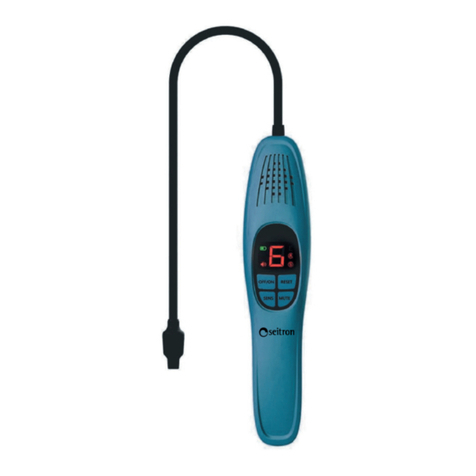
2 3
Betriebsanleitung Tri-Gas Melder 230 V & 12 V
Inhalt
1 Sicherheitshinweise ............................................................................................3
1.1 Allgemein .................................................................................................3
1.2 Notfallmaßnahmen bei Gasaustritt ..........................................................4
1.3 Warnstufen...............................................................................................4
1.4 Zielgruppenhinweise................................................................................4
2 Beschreibung und Funktion ................................................................................4
2.1 Tri-Gas Melder 230 V & 12 V...................................................................4
2.2 Bedienelemente und Anzeigen ................................................................5
2.3 Technische Daten ....................................................................................5
2.4 Lieferumfang............................................................................................6
3 Bestimmungsgemäßer Gebrauch .......................................................................6
3.1 Nutzungsbeschränkungen .......................................................................6
4 Installation ......................................................................................................6
4.1 Anschluss ................................................................................................7
4.2 Montage bei Verwendung von schwerem Gas ........................................7
4.3 Montage bei Verwendung von leichtem Gas ...........................................7
5 Betrieb ......................................................................................................8
5.1 Inbetriebnahme, Bedienung.....................................................................8
5.2 Warnsignale.............................................................................................8
5.3 Fehlalarm, Defekt ....................................................................................8
5.4 Testbetrieb ...............................................................................................9
6 Wartung, Pege, Lagerung und Transport .........................................................9
7 Haftungshinweis..................................................................................................9
8 Entsorgungshinweise..........................................................................................9
9 EU-Konformitätserklärung...................................................................................9
1 Sicherheitshinweise
1.1 Allgemein
• Lesen Sie die Betriebsanleitung vollständig und sorgfältig vor Gebrauch.
Die Betriebsanleitung ist Bestandteil des Produktes und enthält wichtige Hinweise
zum korrekten Gebrauch.
• Bewahren Sie die Betriebsanleitung auf.
Die Betriebsanleitung muss bei Unsicherheiten und Weitergabe des Produktes
verfügbar sein.
Die Installation dieses Produktes ersetzt keine ordnungsgemäße Installation, Be-
nutzungundInstandhaltungvonbrennstobetriebenenGerätensowiederen
zugehörigen Lüftungs- und Abgassystemen.
Das Gerät verhindert keine chronischen Wirkungen einer Gasexposition und kann
nicht vollständig vor speziellen Gesundheitsrisiken schützen.
Die Sensoren sind nicht tauschbar.
Gasinstallationen und deren Abschaltvorrichtungen müssen gemäß EN 1775 den
jeweiligen nationalen Vorschriften entsprechen.
DiemeistenGastypensindmitGeruchsstoenversetztunddadurchbereitsvor
Alarmauslösung riechbar.
• Wenden Sie sich bei Fragen, Defekten, mechanischen Beschädigungen,
Störungen und anderen nicht durch die Begleitdokumentation behebbaren
Problemen an Ihren Händler oder den Hersteller.
• Vermeiden Sie Belastungen wie Hitze und Kälte, Nässe und direkte Sonnenein-
strahlung sowie Vibrationen und mechanischen Druck.
Stromschlaggefahr
• Önen Sie niemals das Gehäuse.
Das Produkt hat keine tauschbaren oder zu wartenden Teile.
• Modizieren Sie weder Produkt noch Zubehör.
Veränderungen können Fehlfunktionen oder Totalausfall verursachen.
• Lassen Sie Installations-, Demontage- sowie Wartungs- und Reparaturarbeiten
nur von ausgebildetem Elektro/Gas-Fachpersonal ausführen.
• Ziehen Sie vor Arbeiten am Produkt den Netzstecker.
• Schalten Sie vor Arbeiten am Produkt die Sicherung aus, vor allem wenn der
Netzstecker schlecht erreichbar oder das Produkt anderweitig mit dem
Stromnetz verbunden ist.
• Sichern Sie die Sicherung im letztgenannten Fall gegen Wiedereinschalten.
Hinweise zur Netztrennung
Das Produkt hat keinen Netzschalter und darf nur an gut zugänglichen Steckdosen
verwendet werden, um es im Notfall und nach Gebrauch schnell aus dieser entfer-
nen zu können.
Das Produkt ist nur bei gezogenem Netzstecker spannungsfrei.
• Ziehen Sie im Notfall und bei Gewitter den Netzstecker direkt am Steckergehäuse.
Explosionsgefahr bei Gasaustritt
• Betreiben Sie kein oenes Feuer.
• Schalten Sie elektrische Geräte, auch Telefone und Türklingeln nicht ein bzw.
unterlassen Sie deren Benutzung.
Wenn Gas vermutet wird und die Lüftung nicht sofort möglich ist, müssen Atem-
schutzgeräte verwendet werden, die unabhängig von der Umgebungsatmosphäre
wirken.
Betriebsanleitung ................................................................. 2
User manual ..................................................................... 10
Mode d‘emploi ..................................................................... 18
Istruzioni per l‘uso............................................................... 26
Instrukcja obsługi................................................................ 34
Navodila za uporabo ........................................................... 42
Návod na obsluhu ............................................................... 50
Návod k obsluze .................................................................. 58
Işletme kılavuzu................................................................... 66
Üzemeltetési utasítások...................................................... 74
GB
FR
IT
POL
SL
SK
CZ
TR
H
DE
DE
BA_TriGasMelder_001282.indd 2-3 26.03.2018 13:44:19






